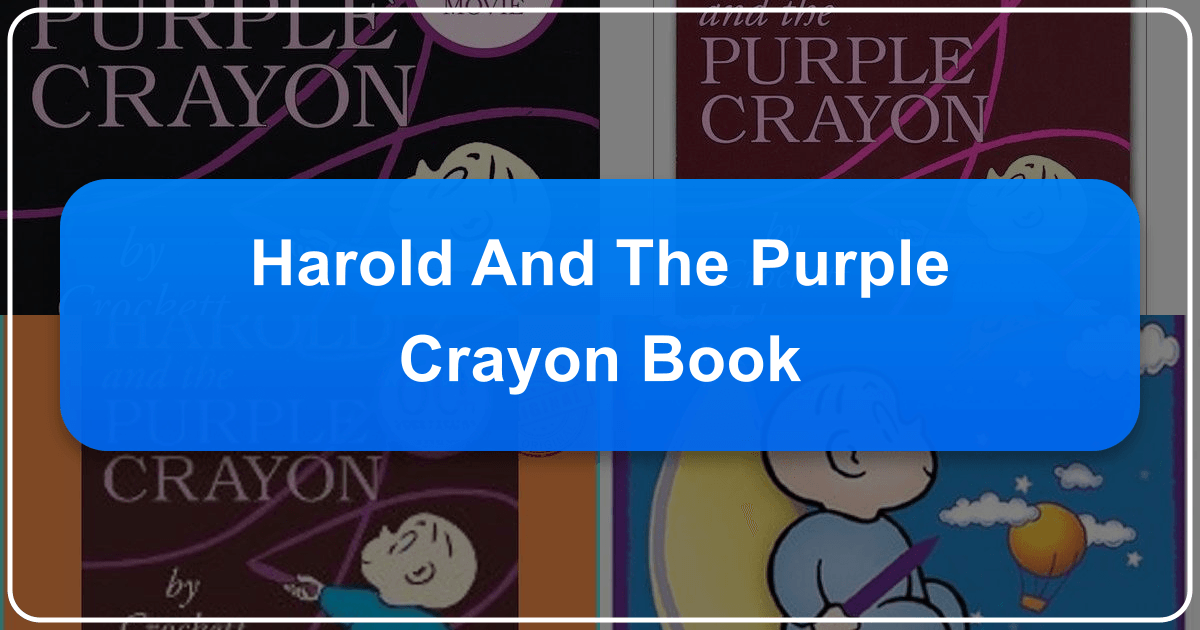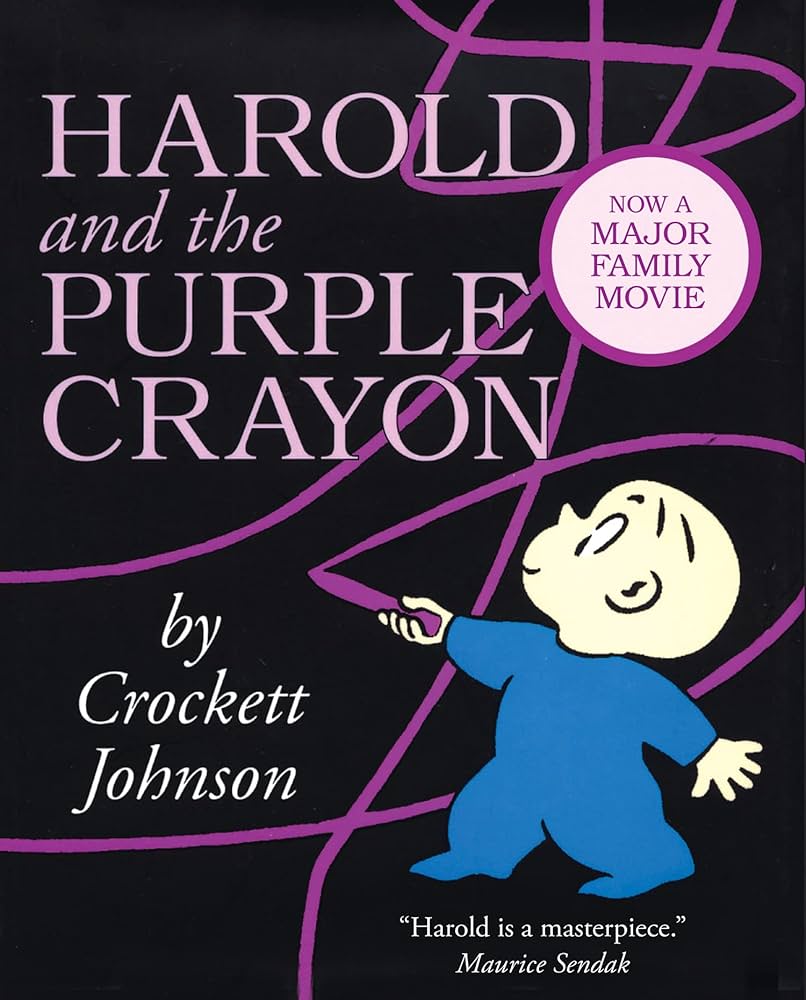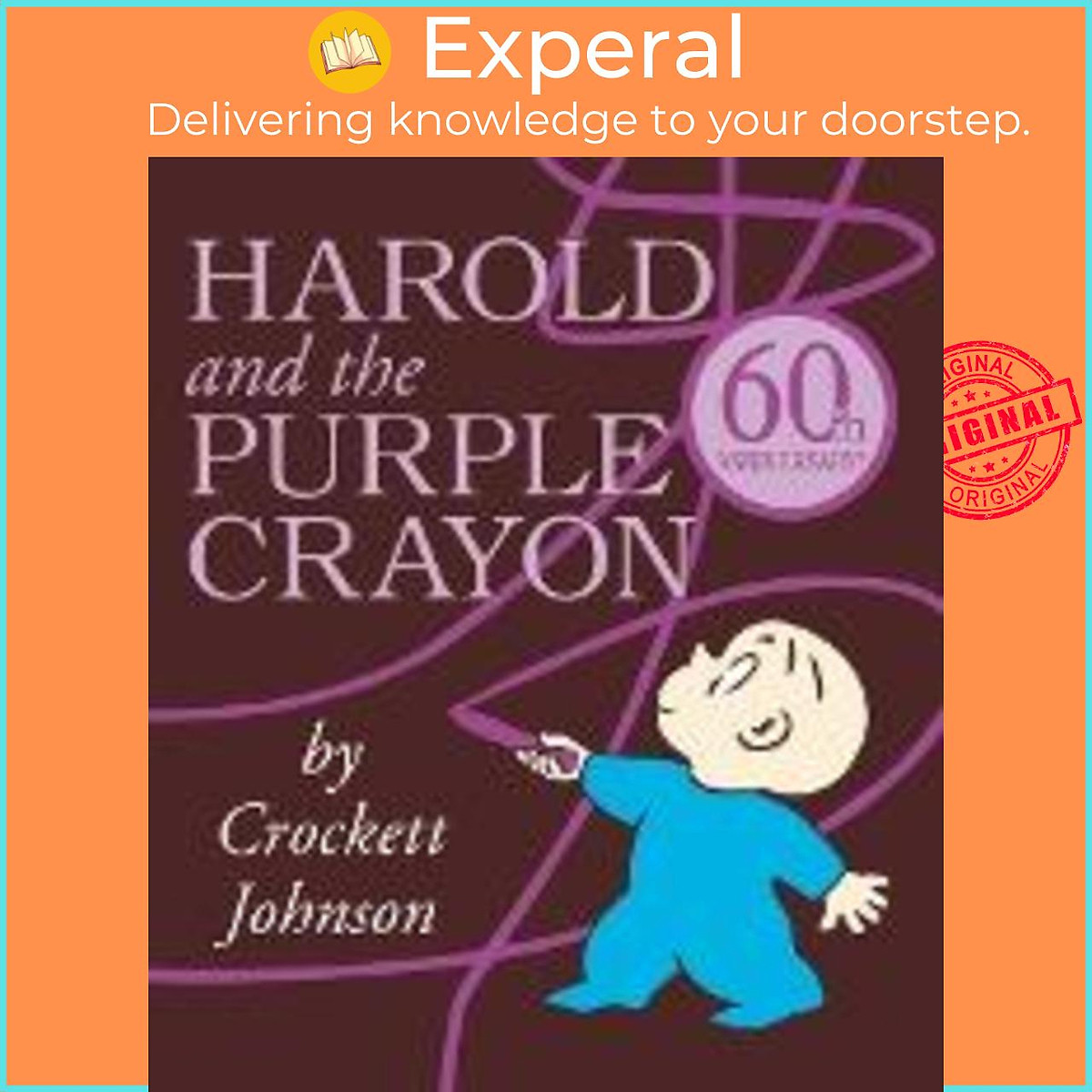*Harold and the Purple Crayon* Book: A Comprehensive Exploration

Harold and the Purple Crayon, a beloved classic children’s picture book by Crockett Johnson, continues to captivate readers of all ages. Its enduring popularity stems from its imaginative storytelling, whimsical illustrations, and timeless themes of creativity and self-discovery. This article delves into various aspects of the book, exploring its literary merit, cultural impact, and lasting legacy. We will examine the book through the lenses of genre, authorship, educational value, and its broader cultural influence.

1. Books: Genre and Literary Significance
Harold and the Purple Crayon transcends simple categorization. While primarily classified as a children’s picture book, its appeal extends beyond its target demographic. The book’s unique blend of narrative and illustration, coupled with its exploration of imagination and the power of creativity, positions it as a significant work within children’s literature. The simple yet evocative text paired with Johnson’s distinctive artistic style create a synergistic effect, enhancing the overall reading experience. The narrative’s core – a child using a crayon to create and navigate his own world – establishes a compelling and universally relatable premise. The book’s success isn’t solely dependent on engaging young children but also on its ability to resonate with adults who appreciate its cleverness and underlying themes.

The genre could be further classified as fantasy, due to the magical properties of the purple crayon, allowing Harold to create and control his surroundings. This fantastical element, however, is grounded in the familiar reality of a young child’s imaginative play, blurring the lines between fantasy and reality. This balance is one key factor in the book’s enduring appeal. Its simple language and straightforward structure make it accessible to young children, while its subtle wit and deeper themes offer rewarding layers of interpretation for adult readers. The book serves as a delightful example of how seemingly simple stories can contain significant depth and resonate across generations.
1.1 Classics and Bestsellers
Its inclusion in numerous “best of” lists and its continued presence on bookshelves for over seventy years solidify Harold and the Purple Crayon’s status as a true classic. It is not merely a nostalgic piece but a work that consistently engages new audiences. The book’s enduring popularity has made it a consistent bestseller, demonstrating its sustained resonance with readers across generations. Its repeated appearances on bestseller lists across various retailers and its continued inclusion in school curriculums highlight its ongoing relevance in the ever-changing landscape of children’s literature.

2. Authors: Crockett Johnson and his Style
Crockett Johnson (1906-1975), the author and illustrator of Harold and the Purple Crayon, was a prolific and versatile artist. His work extended beyond children’s books to encompass comic strips (most notably “Barnaby”), illustrations, and fine art. This multifaceted creative background informed his unique approach to children’s book illustration, resulting in his signature style. His illustrations in Harold and the Purple Crayon are simple yet highly expressive. He uses a limited palette, mostly shades of purple, black, and white, to emphasize the imaginative nature of Harold’s world. The lines are deliberately childlike, reflecting the innocent perspective of the protagonist.
Johnson’s distinctive minimalist aesthetic is not merely stylistic; it complements the narrative, emphasizing the imaginative freedom of Harold’s adventures. The simplicity of the illustrations does not detract from the richness of the story but serves to enhance the readers’ engagement with Harold’s creation process. The use of negative space in the illustrations also underscores the power of suggestion and the limitless potential of imagination. The drawings themselves are almost collaborative, with the reader encouraged to participate in the imaginative process alongside Harold, actively interpreting and expanding on the sparse illustrations.
2.1 Inspirations and Influences
While Johnson’s precise inspirations for Harold and the Purple Crayon remain somewhat speculative, his personal experiences and artistic background undoubtedly played a crucial role. His background in cartoons and comic strips likely influenced his ability to tell a compelling story with minimal text. His understanding of visual narrative and his ability to evoke atmosphere and emotion using simple lines and shapes enhanced the narrative’s impact significantly. Furthermore, his progressive and humanist worldview likely informed the story’s celebration of imagination and self-reliance. It can be argued that the book’s success lies in its ability to connect with fundamental aspects of the human experience, the imaginative play of childhood, and the creative process itself.
3. Reading and Learning: Summaries, Educational Value, and Life Lessons
Harold and the Purple Crayon tells the story of Harold, a young boy who embarks on a nighttime adventure using only his purple crayon. He draws his way through various landscapes—forests, seas, and even confronts a dragon—all created by his own hand. The story is a simple and charming adventure, illustrating the power of imagination and creative problem-solving. The straightforward narrative, which utilizes simple yet evocative language, is well-suited for young readers. As Harold navigates his self-created world, he also inadvertently learns valuable life lessons about problem-solving and self-reliance.
The book’s educational value lies in its ability to foster creativity and imagination. The story subtly encourages children to embrace their imaginative capacities. The lack of extensive detail in the illustrations forces young readers to fill in the gaps, actively participating in the construction of Harold’s world, and engaging in their own imaginative processes. This encourages active reading and stimulates creative thinking. The underlying theme of self-reliance is also a valuable life lesson, as Harold navigates challenges and finds solutions using his own ingenuity and resourcefulness.
3.1 Reading Habits and Engagement
The book’s brevity and engaging illustrations encourage repeated reading. The story is readily memorized by young children, leading to a cycle of familiarity and enjoyment. This repetition not only reinforces comprehension but also builds confidence in young readers, aiding them in developing their reading skills and fluency. The interactive nature of the narrative, facilitated by the relatively spare illustrations, also increases engagement, urging children to participate creatively with the story. The inherent nature of the book encourages playful participation, making it an ideal vehicle for shared reading experiences between parents and children.
4. Libraries: Accessibility and Preservation
Harold and the Purple Crayon is widely available in various libraries, both physical and digital. Its presence in public libraries ensures accessibility to children from diverse backgrounds, promoting literacy and enjoyment of classic literature. The book’s availability in digital formats further expands its reach, allowing for easy access through e-readers and library apps. The book’s continued publication and its various editions (including board books and adaptations for electronic devices) ensures its survival and accessibility for future generations. Its consistent presence in educational and personal libraries speaks to its status as a core element of children’s literature.
4.1 Rare Collections and Archives
While not considered a rare book in the traditional sense, first editions of Harold and the Purple Crayon and associated materials are often found in specialized collections related to children’s literature and the work of Crockett Johnson. These archival holdings are important for scholars and researchers interested in the book’s history, its artistic development, and its influence on later works. These materials offer valuable insight into the creation process, allowing for deeper analyses of Johnson’s artistic choices and the book’s evolution.
5. Cultural Impact: Literary Influence, Adaptations, and Communities
Harold and the Purple Crayon’s cultural impact is substantial and multifaceted. Its influence on subsequent children’s books is evident in the proliferation of stories featuring imaginative protagonists and narratives emphasizing creativity. The book’s continued popularity has led to numerous adaptations in various media. These adaptations underscore the enduring appeal and adaptability of the source material.
The book has also fostered a strong sense of community among its readers and fans. The shared appreciation of the book’s imaginative themes and engaging storytelling has created numerous online and offline communities where readers of all ages engage with the work and share their interpretations and experiences. This collective engagement has only served to increase the book’s relevance and ensured its ongoing celebration.
5.1 Awards and Recognition
While Harold and the Purple Crayon itself may not have garnered many prestigious literary awards in its early years, its lasting impact and sustained popularity speak volumes. Its inclusion in various “best of” lists across children’s literature and its numerous adaptations (films, TV series, stage productions) demonstrate widespread recognition of its quality and significance. The success of the 2001 television adaptation, which even won a Daytime Emmy, further reinforces the book’s continued relevance. Its enduring presence across various media and generations signifies a level of cultural recognition that surpasses the need for traditional awards validation.
5.2 Literary Influence and Adaptations
The book’s influence on children’s literature is substantial and enduring. It helped establish the power of picture books as vehicles for imaginative exploration, creative problem-solving, and personal growth. This influence can be seen in many subsequent picture books that adopt similar techniques and themes. Numerous adaptations to other media—animated films, television series, and even a planned Broadway musical—further demonstrate the book’s versatility and enduring appeal. The wide range of adaptations, each interpreted differently yet staying true to the core narrative, exemplifies the book’s ability to transmute across media while retaining its core themes and emotional resonance. The longevity and diverse range of adaptations highlight the book’s power and adaptability.
In conclusion, Harold and the Purple Crayon is more than just a children’s book; it’s a cultural phenomenon. Its simple yet profound message about the power of imagination continues to resonate with readers across generations. Its lasting impact on children’s literature, its numerous adaptations, and its ability to foster strong community engagement affirm its enduring significance in the world of storytelling.